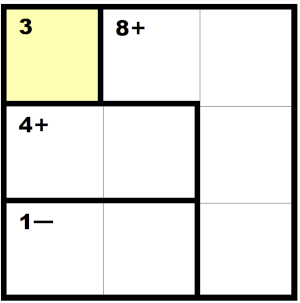| I have noticed that students in every grade are not fluent with arithmetic facts and
operations. This
forms a barrier to developing current-level math skills. Kenken puzzles offer a fun way to
develop this fluency.
If you're not familiar withn Kenken puzzles, here is an example

|
First the freebies:
- 4 in the top row
- 4 in row 2
- 2 in row 5
- 5 in row 6
Next, look at the box pairs with "5-". How can we make a five, by subtracting numbers 6 and under?
Only one way, namely 5=6-1. Therefore we can pencil in 1 and 6 in between the 2 boxes
| 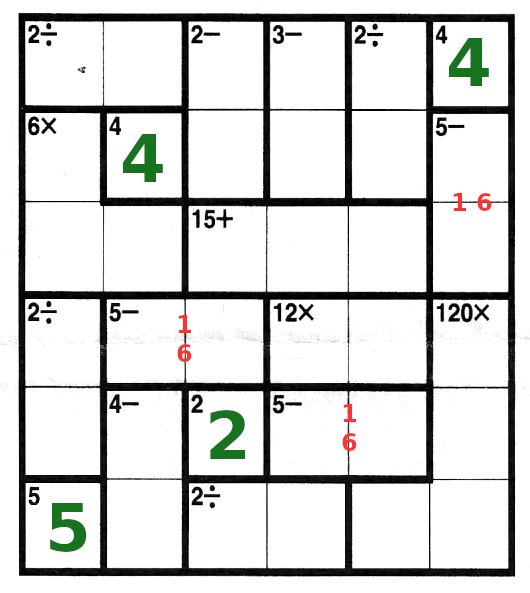
|
Look at the L-shape, that makes 6 by multiplication. How can you make 6 by multiplying?
6 = 1x1x6 or 6=1x2x3. The first one cannot be right, because of the 1 and 6 in the last column. No matter
how you place the 116, there will always be a conflict. So this 6 = 1x2x3.
Next, see the box pair that makes 12 by multipication. 12=2x6 or 12=3x4. But 2x6 does not work, because
there already is a 6 in that row, so it had to be 3x4.
What is now left to go in row 4? 1,6,3,4 are already taken, so only 2 and 5. 5 cannot go on the left side, because
of the 5 on the bottom left. So now we can fill in 2 and 5 in row 4:
| 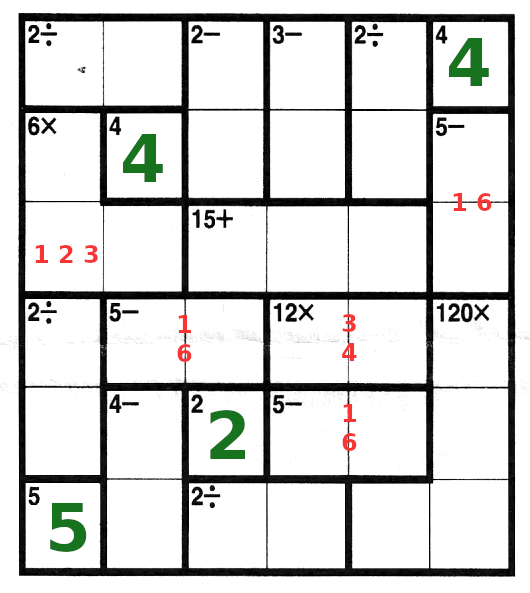
|
| Back to the 6=1x2x3. The 2 cannot go in column 1, so it goes in column 2
| 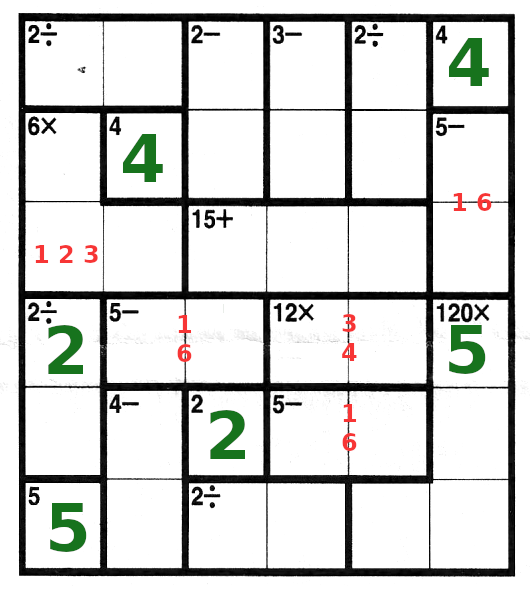
|
| In column 1, 4 and 6 are not yet used. If 4 goes in the top left box, 6 goes in the 5th box down.
But 6/2 is not 2, so the six goes on top, and then 4/2=2.
On the top left we now have a 6, and 6/3 makes 2, so a 3 goes next to the 6 in the top row.
| 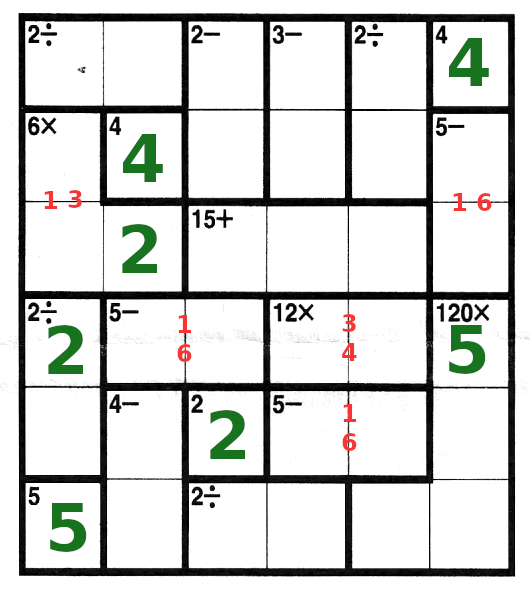
|
| In column 2, what is left is 1, 5 and 6. Can we make 4- from these? Yes, 4=5-1. So we can fill those
in and also then the 6, and the 1 in column 3.
| 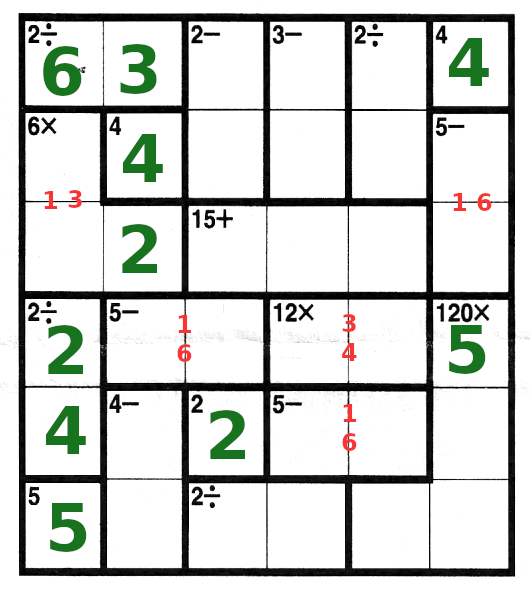
|
| what's left in the last column is a 2 and a 3. 2 has to go at the bottom right, 3 above it.
2x3x5 makes 30, and to get to 120, we have to have a 4 in the bottom row, column 5.
| 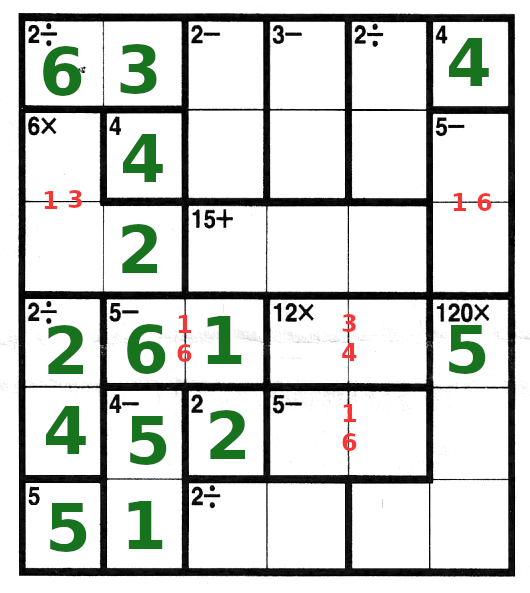
|
| Bottom row needs a 3 and a 6.
| 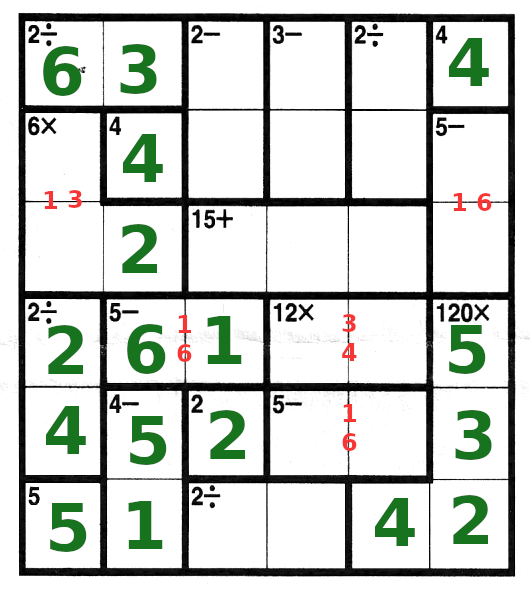
|
| Let's look at the 15+ box. First, there has to be a 4 in there somewhere. Notice that there already
are 4s in all rows except that third one.
Also, there has to be a 5 in there somewhere, since it cannot be elsewhere in row 3. Now 4+5=9, so we need
a 6 to make 15. So the 15 box has 4,5,6 in it.
Therefore we know how in the last column, 6 goes on top, and one below, and then in column 1, the 1
goes on top.
| 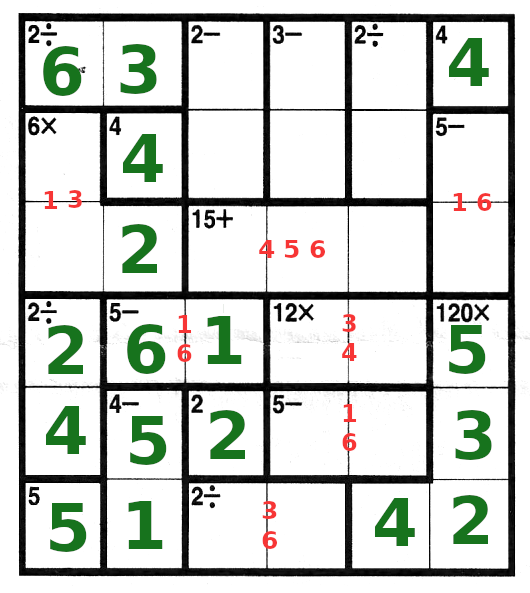
|
| In column 3, we have a "2-", and we have left the numbers 3,4,5,6. So we can make a 2- out of 5-3, or out
of 6-4. But 6-4 is not possible because we already have 4s in rows 1 and 2. So is hass to be 5-3, with the
3 below the 5.
| 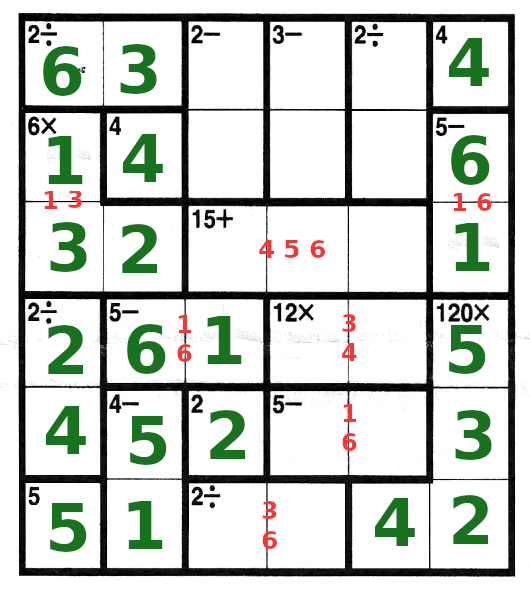
|
| What's left to do in the 3rd column is 4 and 6. But 4 cannot go in the bottom box, that one has to be 3
or 6, so we place the 4 and the 6. Because we placed the 6 in the bottom row, the 3 gets placed next to it,
and because of that, we know how to place the 3 and 4 in row 4.
| 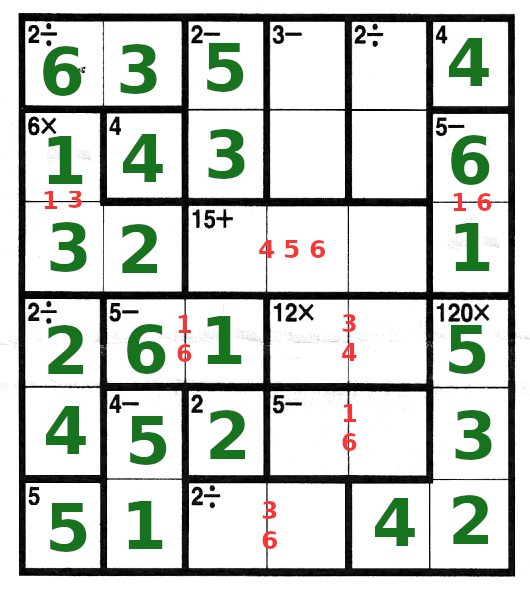
|
| We still need a 5 in row 2. But it cannot be in the "2/" box, because 5 is not divisible by 2,
and 10 is too large. Therefore we can place 5 and 2 in row 2.
| 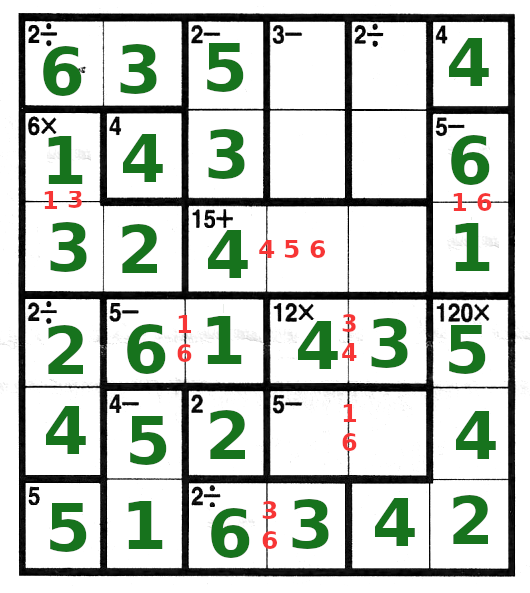
|
| With that, we can solve the rest: 5-2=3; 2/1=2; and everything alse falls into place.
| 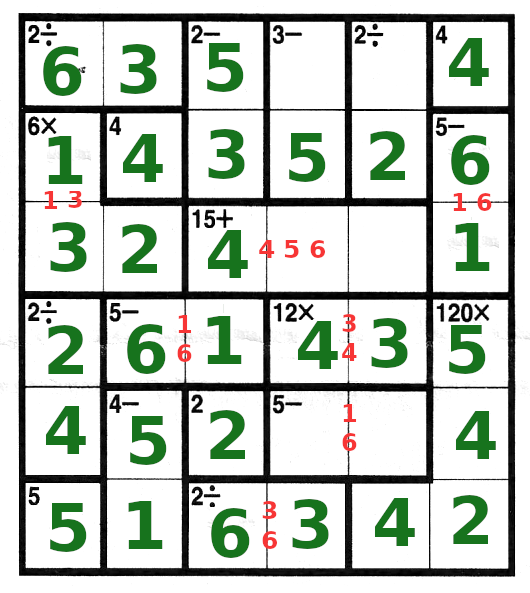
|
|
| 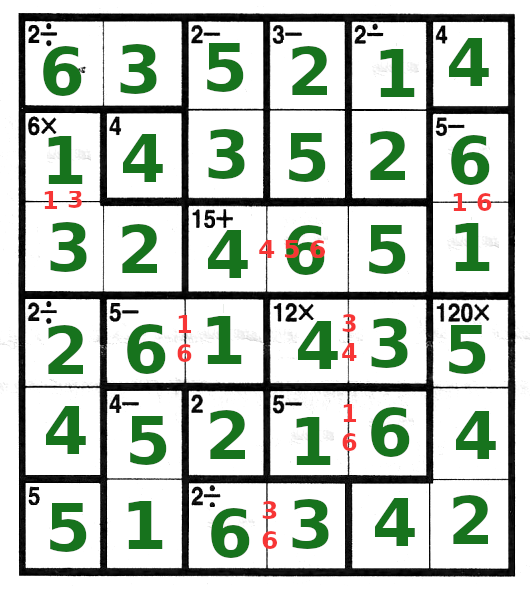
|
